| Botanical Name |
|
| Family |
Acanthaceae - The acanthus family. |
| Pronunciation |
|
| Common Name(s) |
IsiXhosa: ubuHlungu besigcawu
|
| Plant Group |
- Shrub A woody plant of relatively low height, having several stems arising from the base and lacking a single trunk; a bush.
|
| Plant Size |
- Small
| Tree | 4m to 8m |
| Shrub | 50cm to 75cm |
| Perennial/ground cover | 10cm to 20cm |
| Bulb | 20cm to 30cm |
| Succulent | 10cm to 20cm |
|
| Position |
- Partial Shade The area is in shade for part of the day and in full sun for part of the day.
- Sun The area is in full sun for all or most of the day, all year round.
|
| General Information |
- Drought Tolerance: High The plant is well adapted to arid conditions; it can survive long periods of drought and high temperatures without extra water.
- Evergreen Plants that have leaves all year round.
- Frost: Hardy The plant can withstand freezing temperatures or frost without artificial protection.
- Thorns / Spines / Prickles Thorn: A hard, woody, pointed branchlet.
Spine: A modified leaf forming a hard, sharp-pointed outgrowth.
Prickle: A small, sharp-pointed outgrowth growing from the bark of the plant.
- Water Wise Plant species originating from low rainfall regions that require less water to survive and thrive than other plant species.
- Wind Tolerant Plants able to withstand the effect of strong winds.
|
| Specific Information |
Blepharis capensis is a low, rather straggly, spiny shrub. The stems are armed with very sharp spines which grow in pairs at the base of the leaves. The margins of the larger leaves are also armed with short spines. Flowers are clustered in terminal spikes, the bracts of which are stiff, sharply toothed and spine-tipped.
|
| Ad Break |
|
| Flowers |
| Description |
flowers have a large, slightly ruffled, fused lower petal and are clustered around the flower stems, often with four flowers open at a time
|
| Season |
- Winter to Summer Plants will seldom bloom for the entire season as given in the list, but should flower during a period within these parameters.
|
| Colour |
|
| Growth Rate |
- Moderate Specifying growth rate can be very misleading as there is considerable variation of growth rate depending on type and species of plant, available water, supplementary feeding, mulching and general care, as well as the plants suitability and adaptability to the garden environment.
|
| Plant Uses |
- Attracts bees, butterflies or other insects This plant attracts insects which can be food for birds or other creatures in your garden.
- Barrier Plant A very thorny shrub, tree or scrambler that can be used to create an impenetrable barrier.
- Border A strip of ground, at the edge of a driveway or path in which ornamental plants or shrubs are planted.
- Rock Garden An area constructed of larger rocks, arranged naturally, to emphasise the use of stones as a main element. Generally plants used do not need a lot of care.
- Wild Garden An indigenous garden planted for the benefit of wildlife and birds. Provides food, water, a variety of mini-biomes and no poisonous chemicals are used.
|
| Distribution and Habitat |
in the Western, Eastern and Northern Cape Provinces, in full sun in karoid and semi-karoid areas
|
| Planting Suggestions |
Blepharis capensis is very uncomfortable to work with and is unlikely to be found for sale even in indigenous nurseries. Probably just a curiosity or avid collector's plant, and it could possibly be used as a low barrier plant along a garden fence. The plant needs a well drained soil and plenty of sunshine.
|
| Lorraine's Garden Notes |
I managed to obtain some cuttings and two small rooted plants. The cuttings did not take but the rooted plants are growing well under 30% shade and are watered only when completely dry. So far so good. Hope to collect seeds in a couple of years.
|
| Medicinal Uses |
Paste made from the leaves is used as a toothache remedy. Traditionally used as a remedy for snake and poisonous insect bites: a decoction of the plant is given by mouth and a paste made from the leaves is applied to the lesions. The leaf was much used by indigenous and settler populations as a remedy for anthrax in cattle.
|
| Ad Break |
|


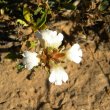
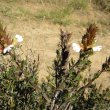
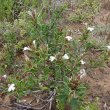
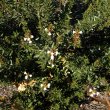

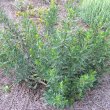
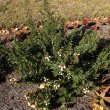


Discuss this plant
Share knowledge, ask a question or give an experience.